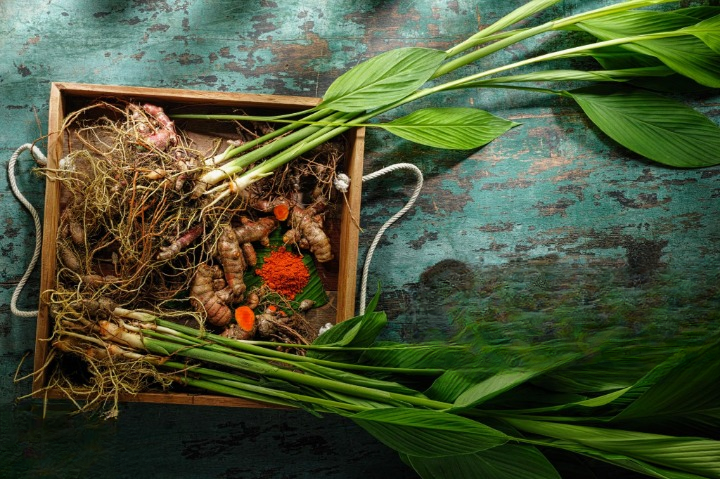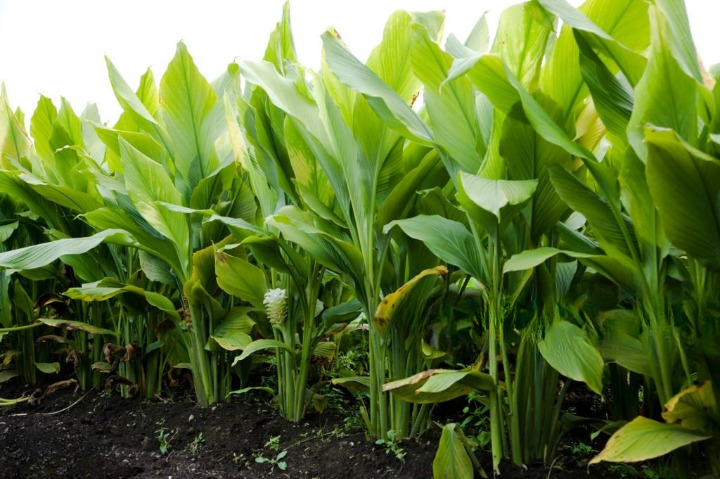
Explore effective turmeric plant cultivation tips for a successful harvest. Learn the best practices and essentials in our comprehensive guide. where we share expert tips and insights to ensure the successful growth of this remarkable herb. Turmeric, known for its vibrant color and myriad health benefits, is a staple in many kitchens and has gained popularity for its cultivation.
Selecting the ideal turmeric variety is crucial for a successful cultivation journey. Opt for varieties like Alleppey Finger, Madras, or Erode for optimal results. These varieties thrive in different climates, so consider your local weather conditions before making a choice.
Turmeric plants prefer well-draining, loamy soil. A soil pH level between 6.0 and 7.8 is ideal. Ensure that the soil is rich in organic matter, providing essential nutrients for robust growth.
Turmeric is a sun-loving plant. Plant it in an area where it receives partial to full sunlight for at least 7-8 hours a day. Adequate sunlight is crucial for the development of rhizomes—the underground stems that house the plant's valuable compounds.

When planting turmeric, opt for high-quality rhizomes from a reliable source. Plant them in furrows, ensuring a spacing of 20-30 cm between each rhizome. Cover them with a light layer of soil and water thoroughly.
Consider companion planting with crops like ginger and garlic to enhance soil fertility and deter pests naturally. This symbiotic relationship benefits all plants involved.
Turmeric plants require consistent moisture, especially during the growing season. Implement a drip irrigation system to provide a steady supply of water while preventing waterlogging. Keep the soil consistently moist but not waterlogged to avoid root rot.
The amount of fertilizer depends on the fertility of the land. Opt for organic fertilizers rich in nitrogen, phosphorus, and potassium. Compost or well-rotted manure works wonders for turmeric plants. Generally, the amount of fertilizer per hectare is: dung 4-6 tons, urea 200-240 kg, TSP 170-190 kg, MOP 160-180 kg, gypsum 105-120 kg and zinc sulfate 2-3 kg. At the time of land preparation, all cow dung, TSP, gypsum, zinc sulphate and 80 kg of MOP fertilizer should be mixed with the soil. After 50-60 days of planting tubers, 100-120 kg of urea should be lightly chopped and applied again. After 50-60 days of the 1st installment, the second installment - and another 50-60 days after the third installment - should be applied. 50-60 kg of urea and 40-45 kg of MOP fertilizer should be applied per hectare as top-fertilizer for 2nd and 3rd installments. Fertilizer of the 2nd and 3rd installment should be applied between the rows and mixed with the soil with a hoe and a little soil should be placed in the well. Apply the fertilizer at the time of planting and subsequently during the growing season for optimal results.
To ward off common pests like aphids and mites, consider using natural deterrents such as neem oil or a garlic-chili spray. These not only protect your turmeric plants but also maintain the integrity of the produce. Prevent fungal infections by ensuring proper air circulation around the plants. Prune an overcrowded foliage and treat the soil with organic fungicides.
Name of the insect: Pinworm
Introduction: Plant growth is stunted by stem attack. As a result production is reduced.
How to identify the insect: The moth (mother) of this insect is orange-yellow in color and has black spots on the wings. The worm is light brown in color. There is a fine smell on the body.
Pattern of damage: Leaves turn yellow as the insect bores into the stem and feeds inside. Dead heart palpitations are seen during the neck. Infected stems show holes and worm droppings.
Life Cycle: The female moth lays eggs on leaves or soft parts of plants. Eggs hatch in 7 days and remain in the larval stage for 2-3 weeks. It takes 1 week to complete the puppet stage. They breed 3 times a year.
Management: Remove the affected tips and deworm if possible. 4 mg per liter of water. Bt should be mixed and sprayed. In severe infestations, approved insecticides should be applied.
Insect Name : Rhizome scale insect
Introduction: This insect attacks rhizomes (yellow) and is not easily discernible from field aisles. As a result, great damage is done.
How to identify the insect: The full-fledged scale insect is bright yellow in color and the body is round. Their bodies are covered with waxy scales.
Pattern of damage: Insect attack on rhizome is seen at late stage of crop. Rhizomes are reduced in size as adult and nymph insects feed on rhizome sap. Rhizomes become stunted and germination capacity is reduced. Infected rhizomes may rot in storage.
Favorable Environment: Humid climate.
Life Cycle: The female lays yellow colored eggs on the rhizome. In 7-8 days, nymphs (baby) emerge from the eggs. After 24 days, the nymph becomes an adult. It takes 31-35 days to complete their life cycle. They breed 10 times a year.
Management: Affected rhizomes should be removed and destroyed in July-August. Scale affected rhizomes should be removed and stored. An approved insecticide should be applied in case of infestation in the field and prior to storage.
Introduction: The worms of this insect stay together when they are small and when they are big, they spread in the whole field, so they should be suppressed in the initial stage.
How to identify the insect: It is a moth-like insect and the body of the worm is covered with hairs. Worms are harmful.
Pattern of damage: Attacks of this insect are seen occasionally. Worms eat leaves and soft parts of plants. If the level of infestation is high, the entire plant becomes leafless.
Favorable environment: Alternative feeding.
Life Cycle: The female moth lays 412-1241 eggs. Eggs hatch in 8-16 days. Worms tend to cluster when small but spread throughout the field when large. After 4 weeks in the larval state, pupae develop. After spending 1-2 weeks in the pupal stage, the full-fledged moth emerges. Moths live for 1 week.

Management: Kill moths by attracting them with light traps. Collect and crush the worms by hand while they are in groups. If birds are arranged to sit in the middle of the field, they will catch and eat moths, worms etc. Conservation of predatory insects and parasitic insects. If water mixed with kerosene is kept in drains around the affected fields, the worms will fall into the water and die. Timely cleaning of weeds and dead leaves. Use of approved pesticides in prescribed doses.
Insect name: Thrips
Introduction: This insect is small but it sucks the sap of the leaves and weakens the plant. For that reason, if the leaves are discolored in the field, it should be looked at carefully, otherwise the yield will decrease a lot.
How to recognize the insect: very small in shape. Females are slender, yellowish. Adult males are dark brown. Baby is white or yellow. They have long spots on their backs.
Damage patterns: Affected leaves turn silvery as they suck the sap. Brown spots or spots appear on the affected leaves. Heavy infestation causes the leaves to dry and fall off. Rhizomes are short and deformed.
Favorable environment: Alternative feeding.
Life cycle: The female lays 45-50 eggs within the cells of the leaf.
In 5-10 days the eggs hatch into nymphs. The nymph goes through two stages in 15-30 days. In the first stage it takes food and in the second stage it remains in the soil without taking food. They breed 8 times a year. And the female insect is able to give birth without mating with the male insect.
Management: Use white sticky traps. This pest can be controlled by increasing the number of field spiders. Approved pesticides should be applied in prescribed doses.
A: Optimal turmeric varieties include Alleppey Finger, Madras, and Erode. Each has unique characteristics suited for different climates.
A: Turmeric prefers well-draining, loamy soil with a pH level between 6.0 and 7.8. Rich in organic matter, this soil provides essential nutrients for robust growth.
A: Turmeric is a sun-loving plant. Ensure it receives partial to full sunlight for at least 7-8 hours daily for the development of healthy rhizomes.
A: Yes, consider companion planting with ginger and garlic. This symbiotic relationship enhances soil fertility and acts as a natural pest deterrent.
A: Maintain a spacing of 20-30 cm between turmeric rhizomes. This ensures proper growth and facilitates efficient cultivation practices.
A: Turmeric plants require consistent moisture. Implement a drip irrigation system, ensuring the soil remains consistently moist but not waterlogged.
A: Organic fertilizers rich in nitrogen, phosphorus, and potassium, such as compost or well-rotted manure, provide the necessary nutrients for optimal growth.
A: Natural pest deterrents like neem oil or a garlic-chili spray effectively ward off common pests, maintaining the integrity of your turmeric plants.
A: Turmeric is ready for harvest after 8-10 months. Look for signs like yellowing leaves and dried stems, then carefully dig around the rhizomes.
A: Yes, turmeric can thrive in pots or containers, provided they are spacious enough for the rhizomes to spread. Use well-draining soil and ensure adequate sunlight.
Turmeric is ready for harvest after 8-10 months of planting. Signs of maturity include yellowing leaves and dried stems. Carefully dig around the rhizomes, being cautious not to damage them. Allow the harvested turmeric to dry in a shaded, well-ventilated area.
Turmeric is used as a spice in various types of cooking. It is also used in form practice.
In conclusion, successful turmeric cultivation requires careful consideration of various factors, from soil conditions to pest management. By following our comprehensive guide, you're on your way to cultivating healthy turmeric plants and enjoying a bountiful harvest.
Note : If you want to know and ask more questions about agriculture, you can contact here

Copyright 2024 Farming Solutions